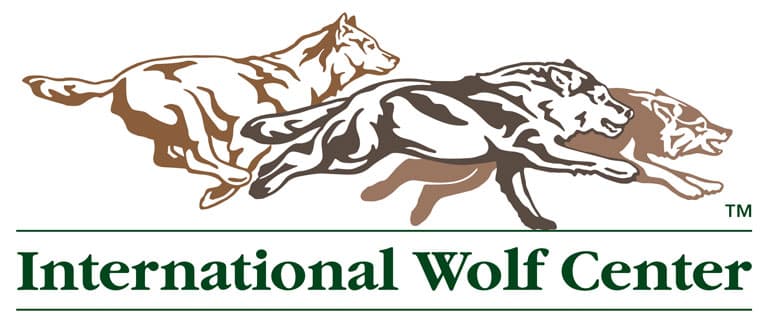From Billings Gazette:
Wolf hunting in southwestern Montana’s Wolf Management Unit 313 was closed on Oct. 26 after the harvest quota of three wolves was met, according to Fish, Wildlife & Parks.
Four wolves, two males and two females, were reported killed on Friday morning to the harvest reporting hotline. The 24-hour notice of closure was implemented immediately. One of the females was wearing a radio collar, indicating it was being monitored by Yellowstone National Park biologists.
Click here for the full story.

Discovery of Wolf-Dog Hybrids in Karnataka Raises Conservation Concerns
From newskarnataka.com:
Hubballi: Researchers from Bombay Natural History Society (BNHS) have made a groundbreaking discovery by documenting the presence of wolf-dog hybrids in the grasslands of Karnataka for the first time. This finding has sparked concerns among conservationists, with one researcher warning of “unimaginable consequences in the future.”
Click here for the full story.
CDFW, UC Berkeley launch Gray Wolf Project
From recorderonline.com:
UC Berkeley’s Rausser College of Natural Resources has established a partnership with the California Department of Fish and Wildlife to monitor gray wolves that have come back to California and Tulare County through the California Wolf Project, CAWP.
The program which is also supported by National Geographic Society brings together scientists, wildlife managers, and conservation communicators working with diverse stakeholders in an effort to better understand the social and ecological factors that shape wolf populations. The program will help provide information for making management decisions when it comes to gray wolves.
Click here for the full story.
High survival rates explain 20 years of rapid expansion of wolves in Germany
From idw-online.de:
Since wolves returned to Germany 20 years ago, they have spread quickly in many parts of the country. The rapid increase in the number of wolves was due to high survival and reproduction rates in areas with favourable environmental conditions. This is the result of an analysis carried out by the Leibniz Institute for Zoo and Wildlife Research (Leibniz-IZW) in collaboration with the LUPUS Institute, the Federal Agency for Nature Conservation (BfN), and the Senckenberg Center for Wildlife Genetics. The probability of survival for wolves during the period analysed was higher than anywhere else in the world.
Click here for the full story.
California Wolf Project Will Advance Science and Management of Gray Wolves
From California Department of Fish and Wildlife:
The launch of the California Wolf Project (CAWP) within UC Berkeley’s Rausser College of Natural Resources establishes a long-term partnership with the California Department of Fish and Wildlife (CDFW) to advance the science and management of gray wolves (Canis lupus) in California.
Click here for the full story.
This State’s Most Celebrated Predator Is Back
From MSN.com:
After more than 100 years, one of California’s most legendary predators is making an exciting comeback. Known for its elusive nature and critical role in the ecosystem, the gray wolf thrived across North America until the early 20th century, when it was almost driven to extinction due to hunting and habitat loss.
Click here for the full story.
4 wolves shot near Gardiner prompting closure of hunting season in the area
From Billings Gazette:
Wolf hunting in southwestern Montana’s Wolf Management Unit 313 was closed on Oct. 26 after the harvest quota of three wolves was met, according to Fish, Wildlife & Parks.
Four wolves, two males and two females, were reported killed on Friday morning to the harvest reporting hotline. The 24-hour notice of closure was implemented immediately. One of the females was wearing a radio collar, indicating it was being monitored by Yellowstone National Park biologists.
Click here for the full story.
Two gray wolves killed in Washington, $10,000 reward offered for information
From KREM.com:
WASHINGTON, USA — Two local agencies are investigating the illegal killings of two wolves in Washington State, and one agency is offering a reward for information on the killings.
According to a press release from the U.S. Fish and Wildlife Service (UFWS), it and the Washington Department of Fish and Wildlife (WDFW) said two federally-listed gray wolves were illegally killed.
Click here for the full story.
Plan to capture Mexican gray wolves near Grand Canyon may violate law, wolf advocates warn
From AZCentral.com:
Wildlife advocacy groups are warning state and federal agencies that ongoing efforts to capture and relocate a pair of Mexican gray wolves near the Grand Canyon violate federal law, and the groups are threatening legal action that could redefine where these endangered wolves can roam.
Click here for the full story.
Now umbrella conservation project covering five wild animal species
From Hindustan Times:
The wildlife wing of the Pune forest department has recently proposed an umbrella conservation project covering five wild animal species namely wolf, jackal, fox, civet and hyena. Together, these species are called ‘Mizo-Carnivorous’ by the forest department. The conservation plan has been submitted to the forest head office, and it is under consideration by the chief wildlife warden, said a senior official from the forest department.
Click here for the full article.
Return of the Wolf
From Rocky Mountain PBS:
“Colorado Experience: Return of the Wolf.” Rocky Mountain PBS interviewed professors of history and wildlife biology, along with ranchers and wolf advocates to track the story of wolves in Colorado. The episode premieres on October 31st at 7 p.m. on Rocky Mountain PBS and will be available to stream on rmpbs.org and YouTube the same day.
Click here for more details.